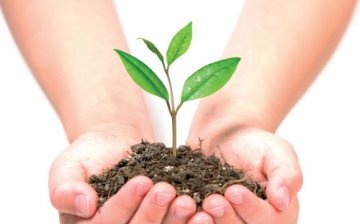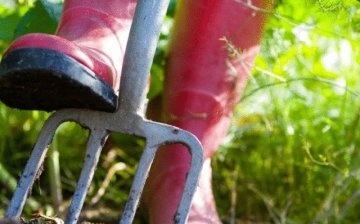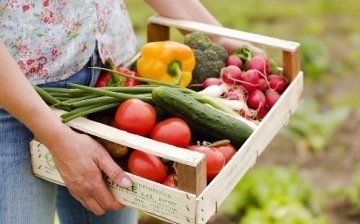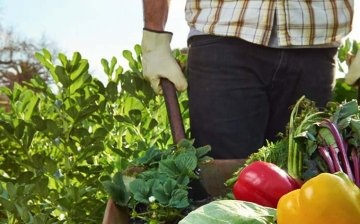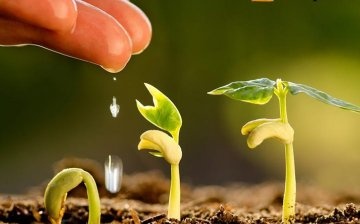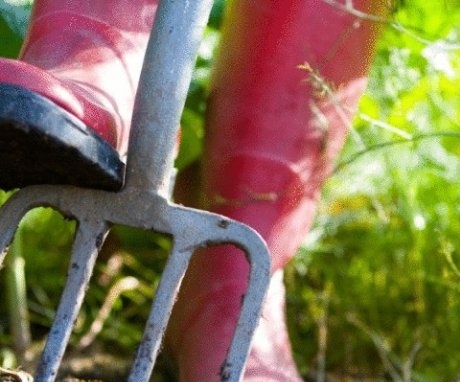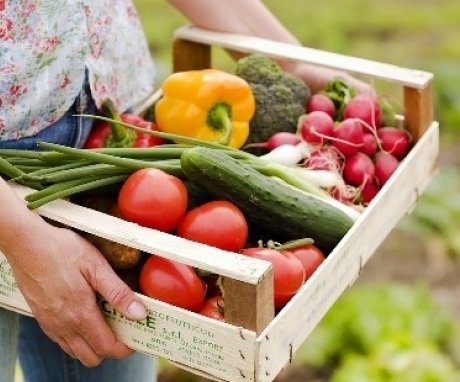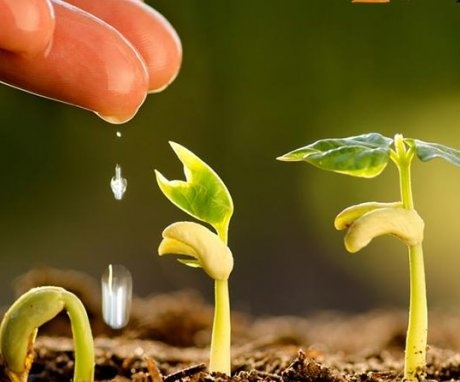How to start organic farming - tips and tricks
In order to reduce the amount of pesticides found in purchased food, many people want to grow organic vegetables and fruit... This method is characterized by a small amount of cash costs, which allows any citizen of our country to do this.
Content:
- Features of providing conditions for plant growth
- Features of the choice of plants
- Plant rotation
- Plant care
Features of providing conditions for plant growth
In order to obtain good results in organic growing of plants, it is necessary to take care of a good structure of the soil. It must have high air permeability, due to which the vegetables will be fully supplied with nutrients.
By providing good and healthy soil, you will have strong and productive plants.
When using chemical processing Toxin soils not only penetrate into food, but also kill various beneficial microorganisms in the soil, which does not allow plants to fully grow and develop. When growing vegetables and fruits organically, good lighting is a prerequisite. That is why the selection of the growing site should be made in such a way that light falls on it for six hours or more.
In preparation beds for organic growing of vegetables, the soil does not need to be dug up. Oddly enough it sounds, but the soil does not need digging. It requires the highest quality loosening. That is why it can be pored through or loosened with a pitchfork. Row spacing from weeds made using a flat cutter.
Preparatory work consists in leveling the beds and the space between them in a 1: 2 ratio:
- The bed width should be within 40 centimeters.
- The row spacing between the beds should be about 80 centimeters.
If you use the same beds for organic growing of plants, this will eliminate the need to dig up the soil, since humus will accumulate in the soil, which will give it looseness and moisture.
The next step is to mulch the row spacings. This requires the use of:
- Sawdust
- Humus
- Weathered grass
- Peat
You need to start growing organically with a small garden bed that you can gradually grow.
Features of the choice of plants
The choice of plants in organic growing is quite important. You should not buy the first ones that come to hand the seeds... They may ascend poorly and give a small harvest... The choice of the type of culture is also made with maximum responsibility.
You must remember that some types of plants lend themselves to different diseases and pestswith which you have to fight with natural substances. These plants include tomato.
To reduce the hassle of growing organically, it is best to choose vegetable varieties that are resistant to disease and pests.
You can find out information about the variety of a particular plant on the package with seeds or in the catalog when purchasing them.
For faster plant growth and a high yield, it is imperative to make feeding:
- In this case, the use of chemical compositions is strictly prohibited.
- The most suitable fertilizer for organic farming is compost or animal manure.
- It is necessary to apply these fertilizers in small quantities, otherwise you can burn the roots of the plants, which will lead to their death.
- To replace mineral fertilizers very often green fertilizers are used. With the help of these substances, it is possible not only to fertilize, but also to control weeds.
When choosing a rich and fertile soil for organic plant cultivation, you can do without top dressing. If a large amount of fertilizer is applied, then the number of pests will be significantly increased. Plants that grow slowly are better able to fight various pests and diseases.
Plant rotation
With an annual landing plants in the same place, you risk losing yield plants. This is due to the fact that in places of constant planting of the same plant, its characteristic diseases will accumulate, which can lead not only to a decrease in yield, but also to the death of the plants themselves.
It is necessary every year to change the planting site of a plant in a particular bed.
For this purpose, you can use a special table, which indicates the sequence of planting plants in the beds.
Some plant species are capable of suffering from the same diseases. Disembarkation such plants in the same place are strictly prohibited. Disembarkation eggplant, a tomato, potatoes and pepper should not be produced in the same place. This also applies to watermelon, squash, cucumbers, pumpkin.
Plant care
To obtain a rich harvest during organic cultivation, it is necessary to ensure quality care for plants. To protect plants from fungal diseases, mulch is used:
- Also, this procedure allows you to control weeds as efficiently as possible.
- The mulch layer should be within 2.5-5 centimeters.
- The most commonly used organic plant growing is organic mulch that is biodegradable.
Weeds are capable of attracting pests that carry a variety of diseases... In addition, they reduce the amount of nutrients and moisture in the soil, which negatively affects the growth and development of organic plants. That is why the gardener needs to carry out the highest quality weed control.
Watering plants are very important for organic cultivation:
- Watering must be done correctly, otherwise it will negatively affect the plants.
- Watering is done only under the trunk of the plants. This is due to the possibility of attracting various insects and diseases with wet leaves.
- That is why it is necessary to exclude sprinkling irrigation. The water supply should be done using a hose that is located at their trunk.
To ensure full flowering and a good harvest of plants, they need to feed on oxygen. This action is performed through the roots. That is why the planting of plants in the beds should be carried out at a great distance from each other. Prevention of various types of fungal diseases will be achieved through good air flow. In order to supply air to the roots of the plant, regular weeding of the beds is carried out.
If you plant at the edges of the beds flowers, then you can increase the number of beneficial insects attracted to the beds, which will not only protect garden crops from pestsbut will also pollinate the plants.
Most often organic cultivation is combined with marigolds, zinnia, nasturtium, purple echinacea, etc. Growing plants organically is a painstaking job. But it will give you the opportunity to eat organic, plant-based foods.
More information can be found in the video.



